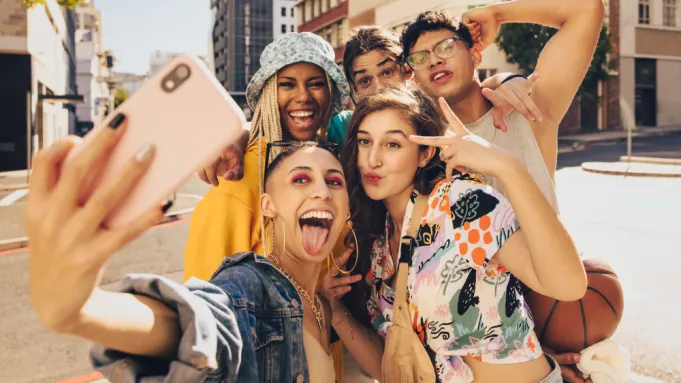Insight of the Day: Gen Z’s In-store Shopping Demands Mimic Online Expectations
- InsightTrendsWorld
- Oct 4, 2024
- 4 min read
Findings:
Gen Z expects physical stores to offer the same instant, personalized, and frictionless experience they get online.
69% of Gen Z shops in brick-and-mortar stores weekly, but many leave empty-handed due to frustrations with long lines, stock shortages, and crowded spaces.
35% of Gen Z shoppers leave stores without making a purchase due to these issues, with 50% citing stock shortages as a major reason for abandoning purchases.
Social media heavily influences their purchasing decisions, with 24% of Gen Z making purchases due to social pressures and 23% driven by viral trends on TikTok and Instagram.
Key Takeaway: Gen Z demands seamless, efficient, and personalized in-store experiences, similar to what they experience online. Retailers must adapt by optimizing convenience and leveraging technology to meet Gen Z’s high expectations or risk losing them to e-commerce.
Trend:
Convergence of digital and physical retail: Gen Z’s shopping expectations are blurring the line between online and offline, requiring retailers to create an in-store experience that mirrors the convenience of e-commerce.
Social Media Influence: Platforms like TikTok and Instagram are critical drivers of Gen Z’s in-store shopping behavior, pushing retailers to integrate digital influence into physical shopping experiences.
Consumer Motivation:
Gen Z seeks speed, convenience, and personalization in shopping experiences. They are accustomed to on-demand services in the digital space and expect the same level of service in physical stores.
Social influence and viral trends play significant roles in their purchasing decisions, highlighting the impact of social media on their shopping habits.
What is Driving the Trend:
Digital-native mindset: Gen Z has grown up in a world of instant access and customization, shaping their expectations of physical retail.
Social media pressure: The influence of TikTok, Instagram, and viral trends drives much of their shopping behavior, including in-store purchases.
Who are the People the Article is Referring To:
Gen Z shoppers (aged 14-27), who expect in-store shopping to meet the standards set by digital shopping platforms and are heavily influenced by social media.
Description of Consumer Product/Service:
The article refers to physical retail stores and how they need to evolve to meet Gen Z’s expectations by offering frictionless, personalized experiences, similar to online shopping, and leveraging technology like self-checkout and AI chatbots.
Conclusions:
Physical retail must evolve to match the speed, convenience, and personalization of e-commerce to engage Gen Z shoppers and prevent them from shifting back to online shopping.
Retailers need to address pain points like long lines, crowded aisles, and stock shortages to retain Gen Z customers.
Implications for Brands:
Retailers must integrate digital convenience into their physical stores, utilizing technologies like self-checkout kiosks and AI-powered customer service.
To attract and retain Gen Z customers, brands should consider how social media influences in-store shopping decisions and design experiences that capitalize on viral trends.
Implications for Society:
The changing expectations of Gen Z could lead to an overhaul of traditional retail experiences, blending online and in-store shopping more seamlessly.
There may be a growing reliance on technology-based retail solutions, further reducing the need for human intervention in shopping environments.
Implications for Consumers:
Gen Z consumers will benefit from more convenient, efficient, and personalized shopping experiences as retailers adapt to meet their demands.
They will likely see more integrated technology in stores, including cashier-less checkouts and AI-driven services.
Implications for the Future:
The future of retail will likely feature more technologically advanced in-store experiences, with retailers prioritizing convenience and speed to meet the expectations of younger shoppers.
Social media will continue to shape purchasing behaviors, making it essential for retailers to keep up with viral trends and adapt accordingly.
Consumer Trend:
On-demand Shopping: Gen Z wants instant and seamless shopping experiences, both online and in physical stores, pushing retailers to optimize convenience and reduce friction points.
Consumer Sub-Trend:
Social Media-Driven Purchases: Gen Z’s shopping behaviors are highly influenced by social media pressures and viral trends, which dictate what they buy and when.
Big Social Trend:
Digital-Physical Retail Convergence: The blending of online and offline shopping experiences, where consumers expect the personalization and instant gratification of e-commerce in brick-and-mortar stores.
Local Trend:
Physical Store Optimization: Retailers are being pressured to optimize their in-store experiences by introducing tech-based solutions like self-checkouts and ensuring on-shelf availability.
Worldwide Social Trend:
Global Influence of Social Media on Retail: Social media platforms like TikTok and Instagram are shaping global consumer behavior, especially among younger generations, influencing what and how they purchase.
Name of the Big Trend Implied by the Article:
Seamless Omni-Channel Shopping: Gen Z’s expectation for a fluid, frictionless experience across both physical and digital shopping environments.
Name of Big Social Trend Implied by the Article:
Social Media-Driven Retail: The growing power of social media platforms in influencing purchasing behavior across both online and in-store shopping environments.

Comments